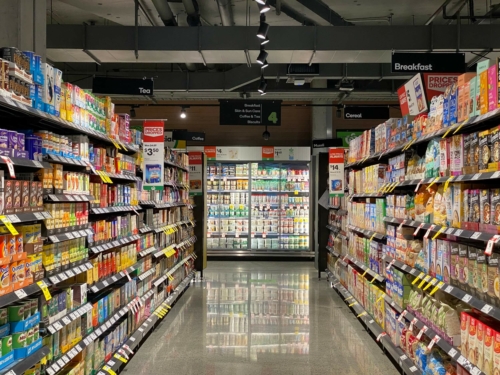How Grocery Stores and Casinos Influence Behavior
Have you ever noticed how your local grocery store and casinos share similar design principles? Despite serving different purposes, both establishments utilize strategies informed by consumer psychology to keep us engaged and satisfied for longer periods.
 Strategic Layout
Strategic Layout
The layout of grocery stores and casinos is carefully planned to guide our movement and maximize the likelihood of desired behaviors. According to Vasillis Dalakas, a Consumer Behavior expert from California State University, nothing in a grocery store happens by accident. Supermarkets guide shoppers counterclockwise to capture their attention. Visually appealing displays, like the floral department or seasonal exhibits, are strategically placed on the right of the entrance, enticing customers to explore further.
Staple items like bread, milk, and eggs are intentionally positioned far apart from each other, ensuring that shoppers encounter additional products along the way. Similarly, casinos employ a segmented approach, directing high-rollers to areas with higher-limit games while diverting more casual players through slot machines and cheaper table games. The layout also takes into account the preferences of different demographics. Casinos cater to female gamblers by offering many slots away from heavy foot traffic, creating a more comfortable and relaxed environment. Additionally, machine-based games are clustered to promote a social atmosphere, appealing to younger players.
A Multi-Sensory Experience
Both grocery stores and casinos understand the power of appealing to our senses. Supermarkets create an atmosphere stimulating our visual, olfactory, and auditory senses. The absence of natural light, windows, and clocks creates a timeless environment, directing shoppers’ focus on their experience. Visually enticing departments like floral, produce, and bakery are strategically located near the entrance, captivating shoppers with colors, scents, and appetizing displays.
Music also plays a crucial role in enhancing the shopping experience. Research has shown that playing music in grocery stores leads to a 38% increase in sales compared to stores without background music. These positive sensations put shoppers in a positive and relaxed mood, stimulating their appetite for more purchases. Similarly, gamblers in casinos respond to pleasant smells, which create a sense of luxury and influence their overall experience. The strategic use of scents, combined with the sound of clanging coins from nearby machines, creates an olfactory-pleasing environment that encourages players to stay and gamble.
Design for Comfort and Appeal
Modern casino designs have moved away from the dark and maze-like layouts of the past. Renowned designers aim to create opulent environments that make gamblers feel glamorous and rich. High ceilings, natural sunlight, elaborate artwork, and decorative clocks contribute to a sense of grandeur and comfort, keeping players engaged and willing to stay longer. Designers focus on creating spaces where people feel comfortable, incorporating storefronts, restaurants, and other activity zones surrounding the casino floor to enhance the overall experience.
Similarly, grocery stores prioritize creating a positive first impression. Fresh samples and interactive products are strategically placed near the entrance to slow down shoppers and entice them to explore further. Aisles are designed to showcase endcap shelves, where products sell eight times faster. The emphasis is on catching the attention of passersby and encouraging them to spend more time and money in the store.
Appealing to Diverse Demographics
Both grocery stores and casinos face the challenge of appealing to a wide range of budgets and demographics. Supermarkets strategically position differently priced products on shelves of varying heights. Higher-priced brand names are often displayed at eye level, while cheaper off-brand alternatives are placed lower, making them less visible. Children’s cereals, on the other hand, are located at eye level to attract the attention of young and persuasive shoppers.
Casinos adapt to changing demographics by targeting millennials, a significant portion of their visitors. They incorporate tech-friendly elements, redesign layouts for social interactions, and integrate entertainment options to cater to millennial preferences.
Design strategies in grocery stores and casinos leverage consumer psychology, employing layout, sensory stimulation, comfort, and demographic targeting to influence behavior and increase engagement and spending. Therefore, it’s important to know these tactics and make informed decisions when shopping or gambling.
